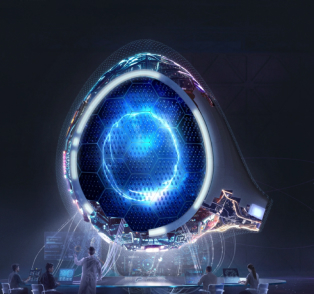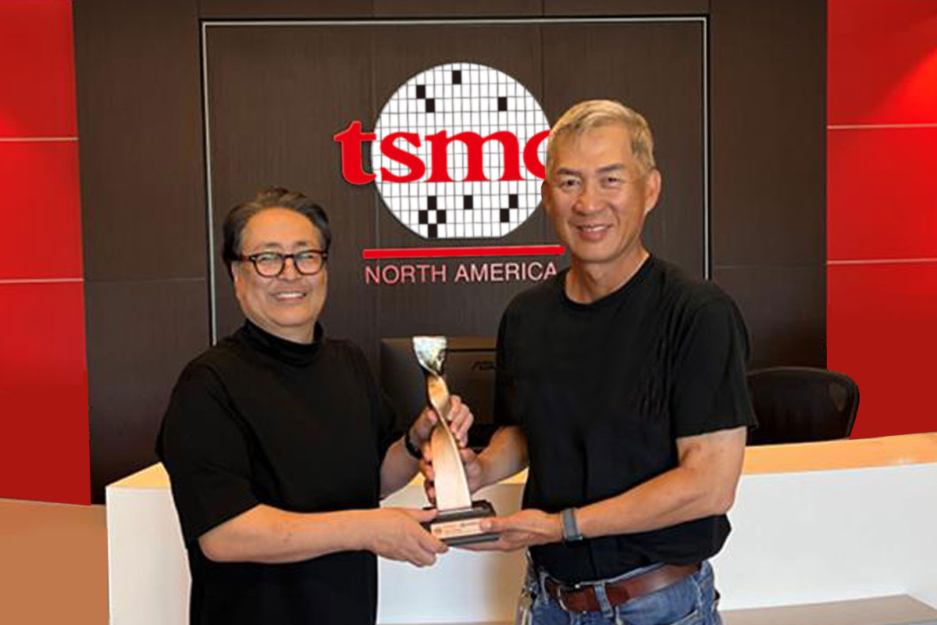The 2-Minute Rule for ambiq
The 2-Minute Rule for ambiq
Blog Article

At the outset, NASA dismissed LOR for a riskier alternative, as an area rendezvous had nevertheless being executed in Earth orbit, much less in lunar orbit. A number of NASA officials, which includes Langley Investigation Centre engineer John Houbolt and NASA Administrator George Small, argued that a lunar orbit rendezvous offered the simplest landing on the Moon with probably the most Expense–productive launch automobile, and the ideal prospect to perform the lunar landing throughout the ten years.[39] Other NASA officers grew to become persuaded, and LOR was then formally picked as being the mission configuration to the Apollo program on November 7, 1962.
The new structure Heart consists of design and style, verification, and validation engineering teams which will deal with the long run design of Place-enabled edge clever devices.
The probabilities are limitless. Due to the fact equally endpoint and wise wearable devices are powered both by battery or by means of energy-harvesting, Electrical power-productive components and algorithms are demanded for sustainability. Layout and type variable are critical for making helpful wearable devices that support to boost our efficiency, boost our health, and enhance our Life style.
Established in 2016, Intento empowers organization leaders to excel in delivering the most effective language expertise for their buyers and teammates working with its State-of-the-art device translation and multilingual generative AI systems, in over 650 languages.
This mission did in Oct of 1968 what Apollo 1 got down to do in February of 1967. It was the flight that obtained Apollo back heading in the right direction, as well as the common, regular sequence of missions from this issue on recalls This system’s achievements.
An early and essential conclusion was deciding on lunar orbit rendezvous more than both of those direct ascent and Earth orbit rendezvous. A space rendezvous is really an orbital maneuver during which two spacecraft navigate through Room and meet up. In July 1962 NASA head James Webb introduced that lunar orbit rendezvous could be utilised[35][36] and the Apollo spacecraft might have three big sections: a command module (CM) using a cabin with the 3 astronauts, and the only real aspect that returned to Earth; a services module (SM), which supported the command module with propulsion, electrical electric power, oxygen, and water; and also a lunar module (LM) that experienced two stages—a descent phase for landing on the Moon, and an ascent phase to position the astronauts back into lunar orbit.
About 90 seconds in advance of the 2nd phase cutoff, the middle motor shut down to cut back longitudinal pogo oscillations. At close to this time, the LOX circulation charge reduced, modifying the mix ratio of the two propellants and ensuring that there could well be as minimal propellant as feasible still left while in the tanks at the end of second phase flight. This was performed in a predetermined delta-v.[35]
Ahead of dawn on July 24, Hornet introduced four Sea King helicopters and three Grumman E-1 Tracers. Two from the E-1s had been selected as "air boss" whilst the 3rd acted as being a communications relay plane. Two of The ocean Kings carried divers and recovery devices. The third carried photographic machines, as well as fourth carried the decontamination swimmer along with the flight surgeon.
Within the Apollo 13 mission, the inboard engine suffered from important pogo oscillation, causing an early computerized cutoff. To guarantee enough velocity was attained, the remaining four engines were saved Lively for extended than planned.
By the top of April, the charred spacecraft 012 had been disassembled to discover the root on the incident as well as pieces of Apollo had been slowly and gradually returning jointly.
AS-203, an uncrewed Saturn IB start which supported the Apollo program but carried no Apollo spacecraft, intended to be introduced 3rd during the series
[110] Mission controllers had planned to ship Apollo twelve's S-IVB into photo voltaic orbit immediately after separation within the Apollo spacecraft, but it is believed the burn lasted as well extended, and that's why didn't send out it shut plenty of into the Moon, so it remained inside of a scarcely secure orbit within the Earth and Moon. In 1971, via a number of gravitational perturbations, it is actually considered to obtain entered inside of a photo voltaic orbit after which you can returned into weakly captured Earth orbit 31 decades afterwards. It remaining Earth orbit yet again in June 2003.[111] See also[edit]
Aldrin appeared up in time for you to witness the flag topple: "The ascent phase of the LM separated ... I had been concentrating around the pcs, and Neil was studying the Perspective indicator, but I appeared up long adequate to begin to see the flag tumble more than."[one hundred seventy] Subsequent Apollo missions planted their flags farther within the LM.[171] Columbia in lunar orbit
If it ended up to remain on the exact same trajectory because the spacecraft, the S-IVB might have offered a collision hazard, so its remaining propellants were being vented along with the auxiliary propulsion system fired to maneuver it absent. For lunar missions ahead of Apollo thirteen, the S-IVB was directed toward the Moon's trailing edge in its orbit so which the Moon would slingshot it over and above earth escape velocity and into photo voltaic orbit.
Get Smart. Use Less Energy.
Ultra-low power SoCs for IoT endpoint devices
that demand complex operations
and longer battery life.
✍ Ambiq® is committed to further improve the quality of life by enabling the intelligence of endpoints while further reducing carbon footprints. Ambiq – your partner in endpoint intelligence.
✯✯✯Based in Austin, San Jose, Hsinchu, Shenzhen, and Shanghai, our leadership and management teams consist of advocates, builders, enthusiasts, entrepreneurs, explorers, incubators, inventors, pioneers, protectors, thinkers, and visionaries. With a diverse spectrum of experiences and skillset, we came together and united with one goal to enable the true Internet of Things where the battery-powered endpoint devices can truly be connected intuitively and intelligently 24/7.
Ambiq Wins the Demo of the Year Award at 2023 TSMC Technology Symposium
September 7, 2023, Austin, TX – Ambiq®, a leading developer of ultra-low-power semiconductor solutions Apollo 3.5 blue plus processor that deliver a multifold increase in energy efficiency, was awarded the Demo of the Year Award by TSMC as a participant of the Innovation Zone at the 2023 TSMC North America Technology Symposium.
Ambiq Wins the Demo of the Year Award at 2023 TSMC Technology Symposium
During the April event, Ambiq showcased various product design wins using TSMC’s 22nm technology in wearables, digital health, smart home, Industrial IoT, pet trackers, and retail segments, with industry-leading energy efficiency. Ambiq also featured two live demos emphasizing its leadership in enabling endpoint AI with its HeartKit™ for remote patient monitoring and its graphics display capabilities for a vivid user interface. 
TSMC pioneered the pure-play semiconductor foundry business model when it was founded in 1987, helping startup companies accelerate their innovations by providing access to the industry’s leading process technologies and manufacturing capacity. Since 2021, TSMC has expanded that mission with an Innovation Zone at its worldwide Technology Symposiums, highlighting how TSMC partners with startup companies to enable cutting-edge products from various applications, including high-performance computing, communication, automotive, IoT, and consumer segments.
“We’re grateful to TSMC and our booth visitors for allowing us to share our energy-efficient technology and processor solutions with them,” said Ambiq’s CEO, Fumihide Esaka. “We’re moving towards an exciting frontier of AI becoming more engrained with our daily lives. With that vision on the horizon, we will continue to develop innovative and first-of-its-kind ultra-low-powered solutions that keep innovation and sustainability in mind. 
Ambiq’s mission is to develop the lowest-power semiconductor solutions to enable intelligent devices everywhere by developing the lowest-power semiconductor solutions to drive a more energy-efficient, sustainable, and data-driven world. Ambiq has helped leading manufacturers worldwide develop products that last weeks on a single charge (rather than days), while delivering a maximum feature set Hearables in compact industrial designs. Ambiq’s goal is to take Artificial Intelligence (AI) where it has never gone before in mobile and portable devices, using Ambiq’s advanced ultra-low power system on chip (SoC) solutions. Ambiq has shipped more than 200 million units as of March 2023.
Ambiq Designs Low-Power for Next Gen Endpoint Devices
Ambiq’s VP of Architecture and Product Planning, Dan Cermak, joins the ipXchange team at CES to discuss how manufacturers can improve their products with ultra-low power. As technology becomes more sophisticated, energy consumption continues to grow. Here Dan outlines how Ambiq stays ahead of the curve by planning for energy requirements 5 years in advance.
Ambiq Highlights From Embedded World 2024
Facebook | Linkedin | Twitter | YouTube